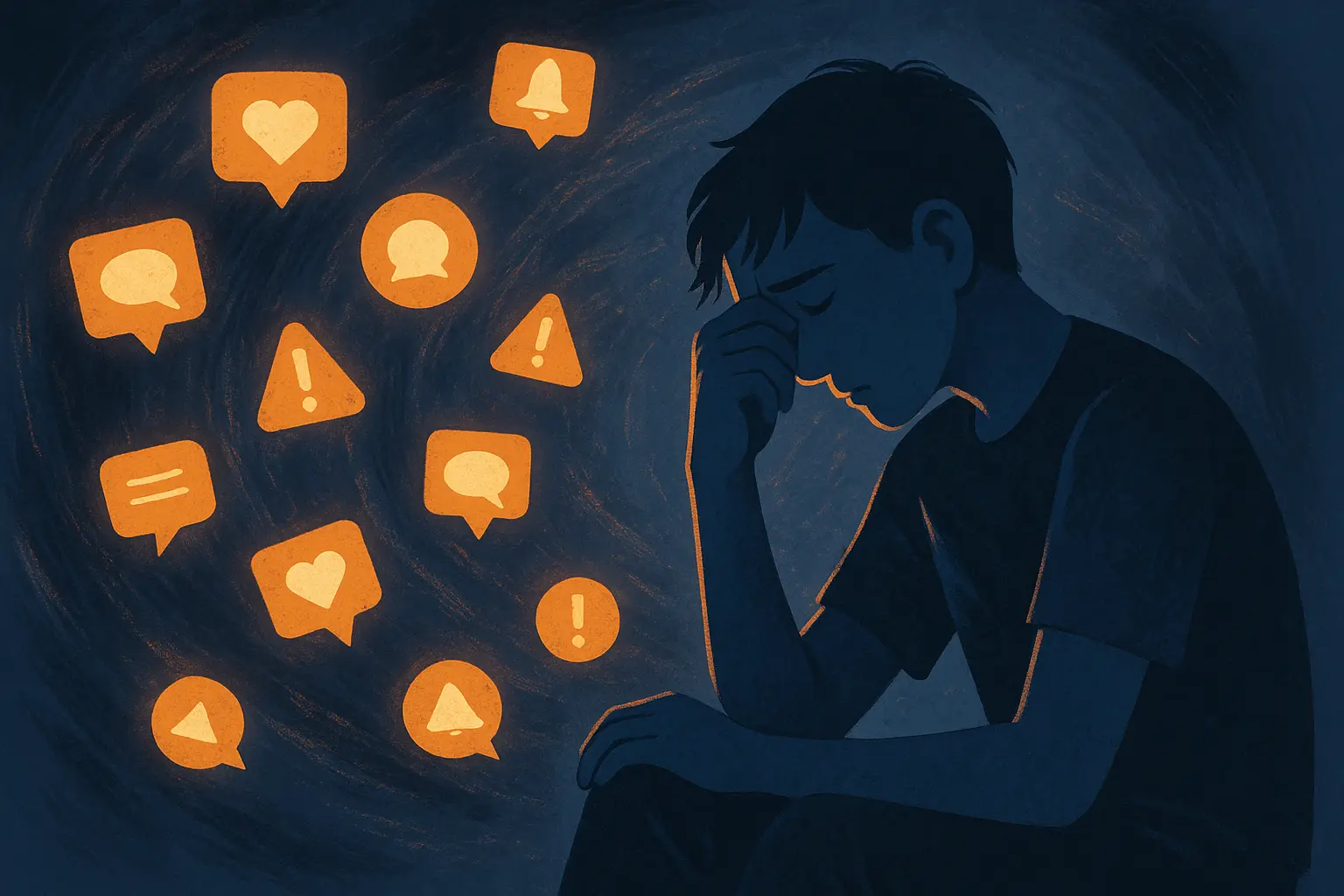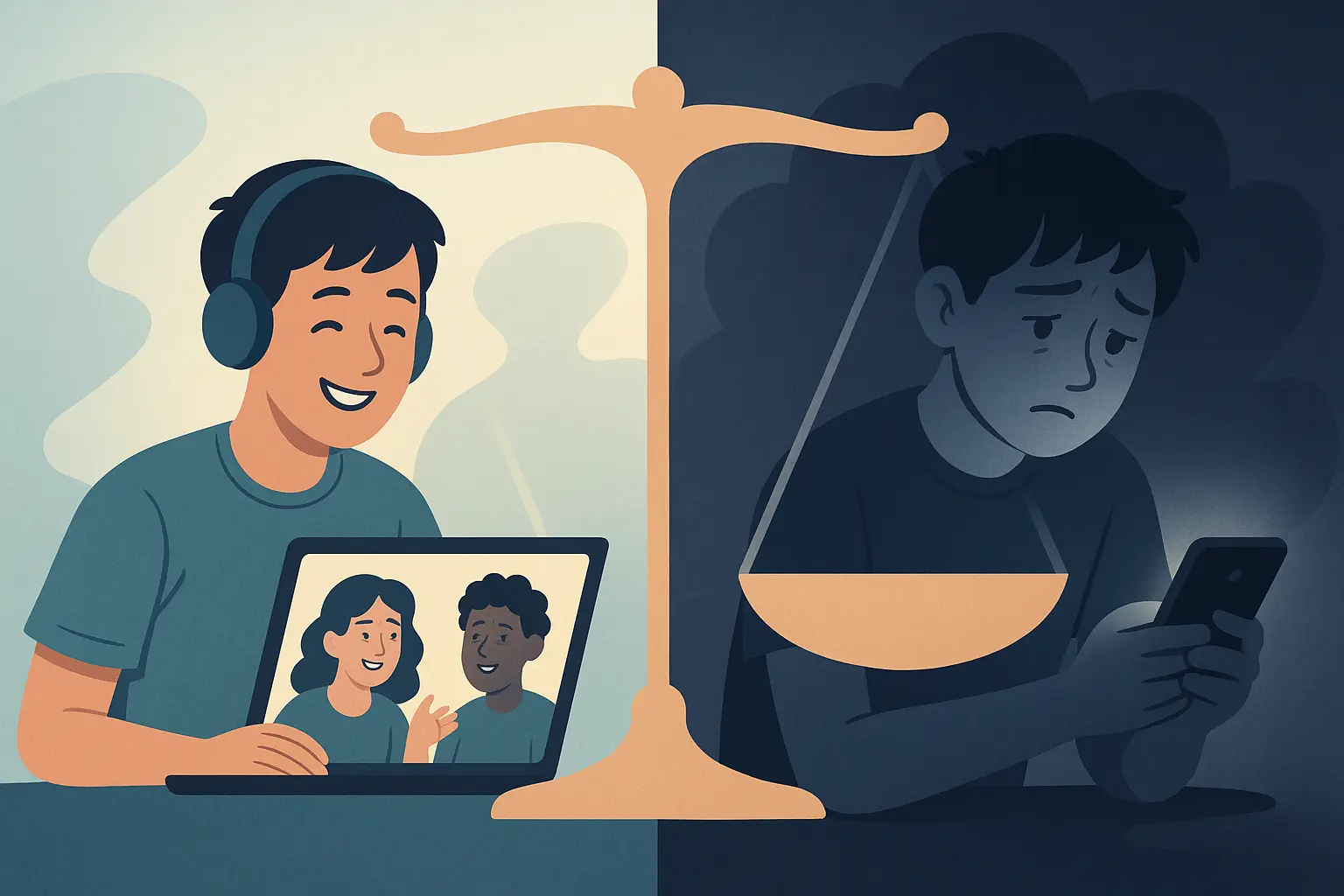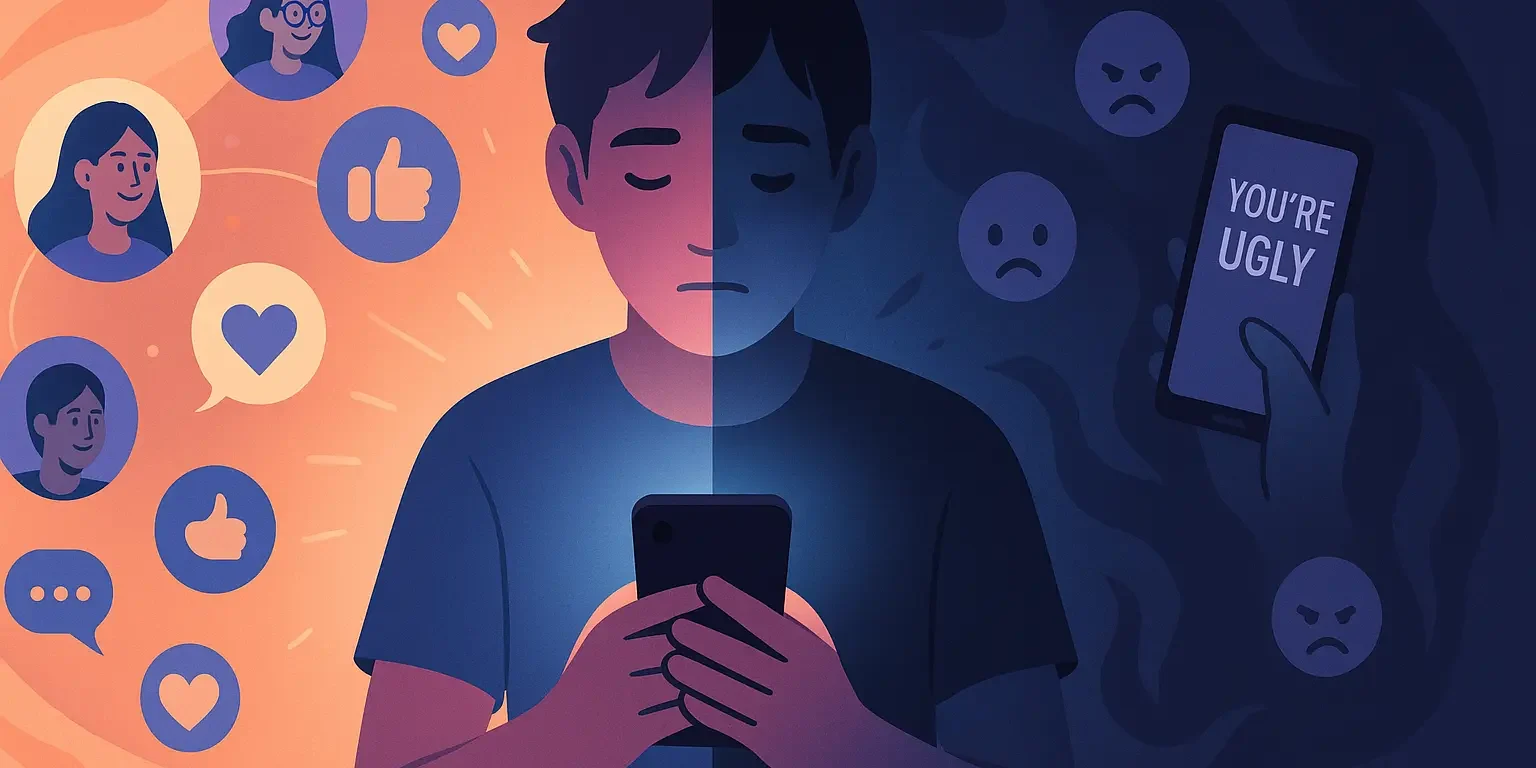Why Is Social Media Such a Double-Edged Sword for Today’s Teens?
For today’s adolescents, social media is nearly inseparable from daily life. Platforms offer spaces for connection, creativity, and even support around identity. At the same time, excessive use has been tied to rising rates of anxiety, depression, and cyberbullying. In fact, in 2023 the U.S. Surgeon General issued a stark advisory on the potential harms of social media for youth, urging parents and communities to treat the issue as a public health priority.
The challenge is balance: how can we allow teens to reap the benefits of online connection without exposing them to serious risks for their mental health?
How Can Social Media Actually Support Teens’ Mental Health and Sense of Connection?
Social media is not inherently negative. For many young people, these platforms provide:
-
Community belonging: Teens can connect with peers who share their interests, experiences, or identities, even when local environments feel isolating.
-
Access to support: Many platforms host conversations around mental health awareness and coping strategies, normalizing help-seeking behaviors.
-
Self-expression: Creative outlets such as short videos, digital art, or writing posts can help teens build confidence and voice.
In some cases, these positive experiences can serve as a buffer against stress, helping teens feel less alone in their struggles.
What Are the Mental Health Risks of Social Media for Teens, Including Anxiety, Depression, and Cyberbullying?
The downsides, however, are serious and well-documented:
-
Mental health concerns: Excessive use correlates with higher rates of depression and anxiety. Teens may feel constant pressure to present “perfect” lives online.
-
Cyberbullying: Hurtful comments or exclusion online can deeply impact self-esteem, often more severely than in-person conflicts.
-
Brain development concerns: The Surgeon General noted that frequent use may alter brain areas tied to emotional regulation and learning.
-
Social comparison: Algorithms that reward attention-grabbing content can leave teens feeling inadequate or “less than”.
Left unchecked, these risks can erode a teen’s confidence and resilience over time.
What Is Digital Burnout, and How Does It Show Up in Teens Who Use Social Media?
Another emerging concern is digital burnout, emotional exhaustion from excessive screen time. Symptoms often include:
-
Irritability and mood swings
-
Trouble sleeping
-
Fatigue or loss of interest in offline activities
-
Social withdrawal
The “always on” culture of social media fuels this burnout. Teens feel pressure to check notifications, maintain streaks, or respond immediately, leaving little space for rest or real-world connection.

How Can Parents and Educators Protect Teens From Digital Burnout and Social Media Overload?
Helping adolescents manage their relationship with social media requires proactive steps:
-
Set boundaries: Encourage device-free times (e.g., during meals or an hour before bed).
-
Promote offline activities: Sports, music, or art help reduce screen dependency while fostering confidence.
-
Teach digital literacy: Schools and parents can equip teens to recognize harmful online behaviors and misinformation.
-
Encourage open communication: Make mental health conversations normal at home so teens feel safe sharing struggles.
Parents and educators play a critical role in guiding teens through these practices, but professional support can also make a difference when patterns become overwhelming.
What Practical Steps Can Teens and Adults Take to Build a Healthier Relationship With Social Media?
Teens and adults can take small but powerful steps to maintain balance:
-
Limit endless scrolling by turning off notifications or setting app timers.
-
Unfollow accounts that trigger negative self-comparisons.
-
Reconnect offline through device-free activities with friends and family.
-
Practice mindfulness techniques like journaling or meditation to regulate emotions.
-
Seek professional counseling if digital habits are harming self-esteem, sleep, or relationships.
At WPA Counseling, our individual counseling services help adolescents and adults alike develop healthier coping strategies for stress, anxiety, and screen overuse.
What Responsibility Do Social Media Companies Have for Teen Mental Health?
While individuals and families shoulder much of the burden, platforms themselves face growing scrutiny. Experts and lawmakers have urged companies to:
-
Curb addictive design features like infinite scroll and “dark patterns.”
-
Provide users more control over their feeds and content exposure.
-
Release clear transparency reports on harmful content moderation.
-
Collaborate with researchers, health practitioners, and parents to ensure safer platforms for youth.
The conversation is shifting: social media isn’t just a personal issue; it is a systemic one that demands accountability.
What Does a Healthy Balance With Social Media Look Like for Teens and Their Families?
Social media is not going away. For teens, it will remain both a lifeline and a risk. What matters now is balance: equipping adolescents with the tools to navigate platforms safely, promoting digital literacy, and fostering strong offline connections.
Parents, educators, and mental health professionals can model healthier behaviors, while platforms and policymakers must step up to safeguard vulnerable users.

If your teen you are feeling overwhelmed by digital burnout or the pressures of social media, you’re not alone. Healing starts with acknowledgment, and support is available.
Learn how anxiety counseling in Pittsburgh or secure online therapy in Pennsylvania can help restore balance and resilience.








